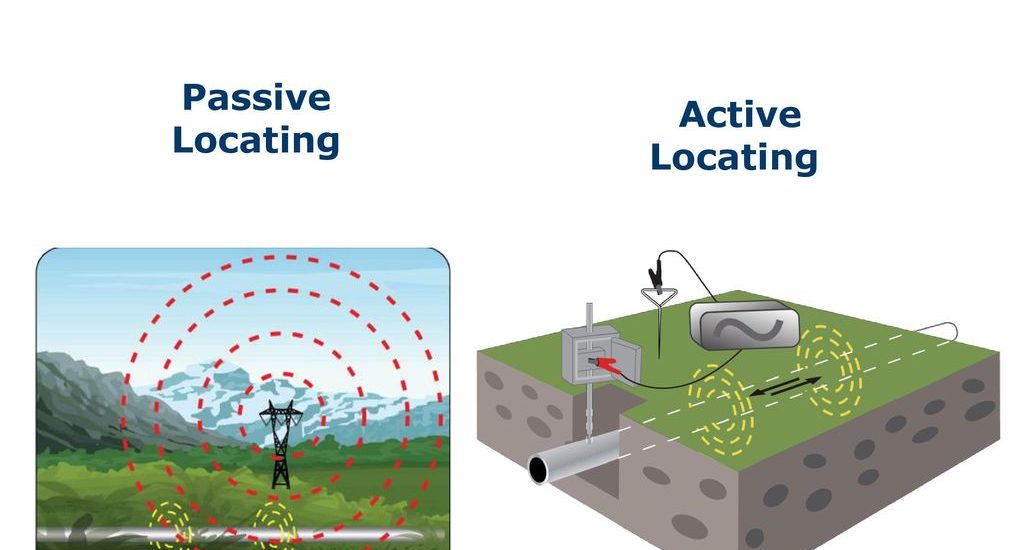Passive v’s Active Locating

Passive v’s Active Locating can use two methods to receive a signal from buried conductors. These are referred to as ‘passive’ and ‘active’ signals. Both methods when used correctly, provide locators with valuable information about buried pipes and cables. Unfortunately, I have witnessed far too many locators, both experiences and novice, solely relying on passive locating to locate power cables – this practice is fraught with danger and should be stamped out.
So, let us have a look at the two available method of locating buried services.
Passive Signals
These are ‘naturally’ present in many conductors without any action by the user, these can be located by the “power and Radio” settings on the receiver and do not need the transmitter to apply a signal. Obvious examples are power cables which carry currents as part of their normal duty.
Less obvious perhaps is the fact that the earth is full of power system return currents, which will tend to flow along the convenient paths of lower resistance provided by metal pipes and cable sheaths.
Even less obvious are radio frequency currents resulting from long wave radio transmissions which penetrate the ground and again flow along buried pipes and cables, whether electrically live or dead. Passive signals therefore enable conductors to be located, but not identified, because the same signals may appear on any conductor.
But there are one or two points to note particularly about passive power signals which may not be immediately obvious. The first one relates to voltage on the line; the signal strength has nothing whatever to do with voltage.

Referring to the drawing, it is the current flowing which produces the magnetic field, which is then detected by the locator. If the line is live at high voltage, but its load is switched off, there is nowhere for current to flow, and therefore no detectable power signal, but it remains a potential danger. This is why streetlights, which are switched off cannot be passively located.
The second point is that the relationship between load current and signal strength is not direct: any well-designed cable attempts to minimise the strength of radiated electromagnetic field by so twisting the cores that the ‘go’ and ‘return’ current fields largely cancel out.
A third point is that all passive signals are liable to change without notice, so that they cannot be relied upon for such precision requirements as depth measurement.
Active Signals
These result from deliberate action by the user to connect or induce a known AC signal from a signal transmitter onto a target line. Active signals not only enable buried lines to be located; they also enable them to be positively identified and traced amongst others in a congested situation typical of below-street services in a city.
The fact that the source of the signal is under the operator’s control enables more precise work such as depth measurement and signal strength comparison to be undertaken. In addition, the choice of frequency can be made to suit the job situation, particularly when a multi-frequency signal transmitter is utilised.
Active locating should always be the locating professionals, first choice. Locate all the known services by applying the transmitters energy by way of either an inductive or conductive application, locate and mark these services. Then and only then conduct a passive sweep in both power and radio to find undocumented services. If an undocumented service is identified, then apply a signal from the transmitter (usually by way of inductive spillage) and locate normally to a visual and logical endpoint.
Locating Unlimited Pty Ltd (RTO ID 45518), Australasia’s leading provider of Underground Damage Prevention Training provides quality training solutions to industry to help maintain safe work practices around buried utilities and prevent damage to this infrastructure.
Contact Jeff at Locating Unlimited – 0419 44 66 27 or jeff.moore@locatingunlimited.com.au